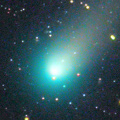
|
It brightened rapidly in outburst in mid October. Now it is bright as 8.5 mag (Feb. 4, Marek Biely). It keeps 8-9 mag for a long time until early summer, and it keeps observable in the morning sky in the Northern Hemisphere. In the Southern Hemisphere, it is getting higher and it will be observable in excellent condition after spring.
Date(TT) R.A. (2000) Decl. Delta r Elong. m1 Best Time(A, h)
Feb. 15 18 41.50 2 41.6 2.046 1.601 50 8.2 4:01 (259, 10)
Feb. 22 19 0.60 1 31.4 2.024 1.599 51 8.2 4:10 (257, 15)
|
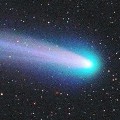
|
It passed only 0.4 A.U. from the earth, and 0.8 A.U. from the sun in November and December, and brightened up to 4.7 mag (Nov. 28, Juan Jose Gonzalez). Now it is 7.8 mag (Feb. 4, Marek Biely). In the Northern Hemisphere, it keeps observable in excellent condition for a long time until 2014 autumn when the comet will fade out. It is appearing in the morning sky again also in the Southern Hemisphere, and it keeps observable in good condition after this.
Date(TT) R.A. (2000) Decl. Delta r Elong. m1 Best Time(A, h)
Feb. 15 18 23.62 3 57.4 1.562 1.277 54 8.3 4:01 (255, 13)
Feb. 22 18 28.01 2 11.6 1.582 1.369 59 8.7 4:10 (252, 21)
|
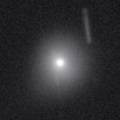
|
Now it is bright as 12.3 mag (Feb. 9, Chris Wyatt). The brightening is somewhat slow, but it is expected to brighten up to 6-7 mag in 2014 autumn. It keeps observable in good condition for a long time in the Northern Hemisphere. It keeps locating low in the Southern Hemisphere.
Date(TT) R.A. (2000) Decl. Delta r Elong. m1 Best Time(A, h)
Feb. 15 16 36.93 16 30.3 2.929 2.982 83 11.9 4:01 (227, 24)
Feb. 22 16 36.82 18 16.0 2.740 2.902 89 11.6 4:10 (218, 27)
|

|
It will pass the perihelion on Feb. 15, and will brighten up to 12 mag. It is appearing in the evening sky in the Northern Hemisphere. It will be observable also in the Southern Hemisphere in early March. Then it keeps observable while the comet will fade out very rapidly.
Date(TT) R.A. (2000) Decl. Delta r Elong. m1 Best Time(A, h)
Feb. 15 23 29.63 -6 37.4 1.346 0.608 24 12.1 20:25 ( 80, -3)
Feb. 22 0 13.27 -3 34.6 1.264 0.622 28 12.2 20:15 ( 86, 0)
|
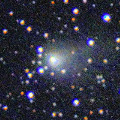
|
First return of a new periodic comet discovered in 1998. It brightened up to 10 mag at the discovery. Now it is 12.7 mag (Jan. 28, Chris Wyatt). A bit fainter than originally expected. But in the Northern Hemisphere, it keeps observable in excellent condition from autumn to spring. It locates somewhat low in the Southern Hemisphere.
Date(TT) R.A. (2000) Decl. Delta r Elong. m1 Best Time(A, h)
Feb. 15 6 14.54 28 3.7 1.426 2.170 127 12.2 20:34 (180, 27)
Feb. 22 6 18.01 26 32.4 1.482 2.163 120 12.2 20:15 (179, 29)
|
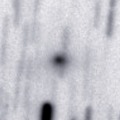
|
It brightened up to 2 mag by unusual major outburst in 2007. It is coming back now. It will be 14 mag at best by normal prediction. But actually, it is already very bright as 13.5 mag (Nov. 25, Hidetaka Sato). Now it is not observable. It will appear in the morning sky in May.
Date(TT) R.A. (2000) Decl. Delta r Elong. m1 Best Time(A, h)
Feb. 15 22 13.05 -9 2.2 3.060 2.081 6 13.6 20:25 ( 66,-17)
Feb. 22 22 27.36 -7 1.8 3.059 2.073 3 13.5 20:15 ( 67,-19)
|
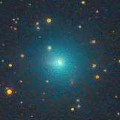
|
It brightened very rapidly, and brightened up to 10.5 mag from autumn to winter. It is bright as 11.6 mag still now (Jan. 19, Taras Prystavski). It will be fading after this. In the Northern Hemisphere, it keeps observable in excellent condition until May when it becomes fainter than 18 mag. It will not be observable after this in the Southern Hemisphere.
Date(TT) R.A. (2000) Decl. Delta r Elong. m1 Best Time(A, h)
Feb. 15 1 50.70 29 57.9 1.802 1.757 71 13.5 20:25 (129, 2)
Feb. 22 2 11.76 31 16.1 1.880 1.789 69 14.0 20:15 (131, 1)
|
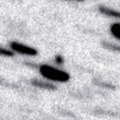
|
It reaches up to 12 mag in 2014 spring. But the condition in this apparition is bad. It locates low around the brightest days. Now it is not observable. It will appear in the morning sky at 13 mag in late July.
Date(TT) R.A. (2000) Decl. Delta r Elong. m1 Best Time(A, h)
Feb. 15 22 51.17 -4 8.3 2.867 1.943 16 13.8 20:25 ( 76,-13)
Feb. 22 23 7.34 -2 48.2 2.854 1.909 13 13.7 20:15 ( 77,-14)
|
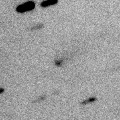
|
Already bright as 14.4 mag (Jan. 3, Mt. Lemmon Survey). It will brighten up to 13 mag and to be observable in excellent condition from spring to summer.
Date(TT) R.A. (2000) Decl. Delta r Elong. m1 Best Time(A, h)
Feb. 15 13 60.00 -13 10.5 2.136 2.687 113 13.9 4:01 (193, 68)
Feb. 22 14 4.20 -13 23.0 2.041 2.671 119 13.7 3:58 (180, 68)
|

|
It brightened up to 11-12 mag in 2012. Now it is 14.1 mag (Jan. 26, Taras Prystavski). It will be observable in good condition at 14 mag until 2014 early summer.
Date(TT) R.A. (2000) Decl. Delta r Elong. m1 Best Time(A, h)
Feb. 15 13 11.24 -14 9.4 6.518 7.117 123 13.8 3:33 (180, 69)
Feb. 22 13 6.54 -13 54.2 6.450 7.151 132 13.8 3:01 (180, 69)
|

|
Now it is 14.7 mag (Jan. 27, Taras Prystavski).
Date(TT) R.A. (2000) Decl. Delta r Elong. m1 Best Time(A, h)
Feb. 15 15 53.46 -29 38.1 6.195 6.163 83 13.9 4:01 (269, 61)
Feb. 22 15 55.66 -29 53.8 6.081 6.162 90 13.8 4:10 (263, 69)
|
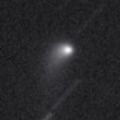
|
Now it is 13.9 mag and visible visually (Feb. 1, Chris Wyatt). It keeps 14 mag for a long time until 2014 summer. It keeps observable in good condition in the Northern Hemisphere. It is observable only until February in the Southern Hemisphere.
Date(TT) R.A. (2000) Decl. Delta r Elong. m1 Best Time(A, h)
Feb. 15 2 39.29 24 22.0 1.787 1.871 79 14.0 20:25 (133, 13)
Feb. 22 2 40.76 27 28.1 1.847 1.831 73 14.0 20:15 (132, 8)
|
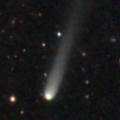
|
Now it is 14.3 mag and visible visually (Feb. 3, Chris Wyatt). It is expected to brighten up to 7.5 mag and to be observable in excellent condition from summer to autumn in 2014 in the Southern Hemisphere. The condition is bad in the Northern Hemisphere. It will pass extremely close to Mars in 2014 October.
Date(TT) R.A. (2000) Decl. Delta r Elong. m1 Best Time(A, h)
Feb. 15 2 42.35 -33 0.6 3.767 3.523 68 14.0 20:25 ( 78, 48)
Feb. 22 2 39.61 -31 53.4 3.783 3.453 63 14.0 20:15 ( 77, 44)
|
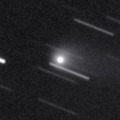
|
Now it is bright as 13.2 mag (Jan. 28, Taras Prystavski). It keeps 13-14 mag and observable in good condition in the Northern Hemisphere for a long time from 2013 to 2014. In the Southern Hemisphere, it is not observable until 2014 autumn.
Date(TT) R.A. (2000) Decl. Delta r Elong. m1 Best Time(A, h)
Feb. 15 23 45.13 61 7.8 3.559 3.476 77 14.0 20:25 (145,-33)
Feb. 22 23 55.17 59 20.0 3.657 3.486 72 14.1 20:15 (143,-33)
|

|
Now it is 12.9 mag (Nov. 27, Sandor Szabo). It keeps bright at 13-14 mag for a long time until 2014. In the Northern Hemisphere, it will be getting higher gradually, and it keeps observable for a long time after this. In the Southern Hemisphere, it keeps unobservable until March.
Date(TT) R.A. (2000) Decl. Delta r Elong. m1 Best Time(A, h)
Feb. 15 19 50.21 4 35.5 6.983 6.201 35 14.1 4:01 (268, -5)
Feb. 22 19 52.33 4 30.3 6.946 6.217 39 14.1 4:10 (263, 2)
|
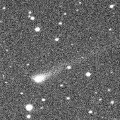
|
Although it had been unobservable for a while, it is appearing in the morning sky. Now it is 15.2 mag (Feb. 6, Taras Prystavski). It keeps bright as 13-14 mag for a long time from 2013 to 2014.
Date(TT) R.A. (2000) Decl. Delta r Elong. m1 Best Time(A, h)
Feb. 15 19 8.00 -26 33.5 3.739 3.063 40 14.6 4:01 (288, 21)
Feb. 22 19 19.44 -26 27.3 3.672 3.061 45 14.6 4:10 (285, 26)
|
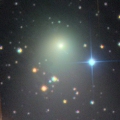
|
It became much brighter than expected, and reached up to 8.5 mag (Aug. 15, Alexandre Amorim). Now it is fading rapidly, but it is bright as 13.8 mag still now (Jan. 28, Taras Prystavski). In the Southern Hemisphere, it will keep observable in good condition for a long time until 2014 summer when the comet fades out. It will never be observable again in the Northern Hemisphere.
Date(TT) R.A. (2000) Decl. Delta r Elong. m1 Best Time(A, h)
Feb. 15 16 58.60 -68 46.7 2.949 2.808 72 14.9 4:01 (336, 47)
Feb. 22 17 7.22 -69 14.1 2.950 2.878 76 15.1 4:10 (339, 49)
|
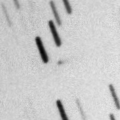
|
New bright comet discovered in the STEREO spacecraft images. It brightened up to 3.8 mag on Jan. 31 thanks to the forward scattering. It was observed at 15.2 mag on the ground (Feb. 20, Hidetaka Sato). It will approach to the Sun down to 0.5 a.u. on Feb. 18. Because the absolute magnitude is faint as 18 mag, it may be disintegrated. It is appearing in the morning sky in the Northern Hemispehre. In the Southern Hemispehre, it will not observable after this. But it must have been observable in excellent condition in 2013.
Date(TT) R.A. (2000) Decl. Delta r Elong. m1 Best Time(A, h)
Feb. 15 20 13.71 -7 30.6 1.201 0.518 25 15.5 4:01 (281, -2)
Feb. 22 20 27.31 2 8.2 0.973 0.520 30 15.1 4:10 (270, -3)
|

|
Big asteroid discovered in 1906. It suddenly showed the cometary activity on Dec. 11, 2010, probably due to an impact of a small object. It has already turned to be stellar.
Date(TT) R.A. (2000) Decl. Delta r Elong. m1 Best Time(A, h)
Feb. 15 1 2.51 -2 51.0 3.832 3.253 47 15.1 20:25 ( 96, 13)
Feb. 22 1 10.05 -1 42.4 3.912 3.260 43 15.2 20:15 ( 95, 10)
|
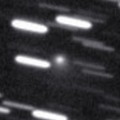
|
Now it is 14.7 mag (Jan. 19, Taras Prystavski). It keeps 15 mag until March, and will be observable in excellent condition in the Northern Hemisphere. It locates low in the Southern Hemisphere.
Date(TT) R.A. (2000) Decl. Delta r Elong. m1 Best Time(A, h)
Feb. 15 4 45.04 34 7.4 1.214 1.784 107 15.4 20:25 (163, 18)
Feb. 22 4 58.11 33 20.4 1.263 1.778 103 15.5 20:15 (161, 19)
|
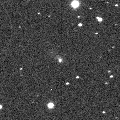
|
It brightened up to 14.0 mag from spring to summer in 2013 (June 11, Sandor Szabo). Now it is 14.9 mag, much brighter than origianlly predicted (Jan. 27, Taras Prystavski). In the Northern Hemisphere, it will be observable at 15-16 mag in excellent condition until spring. It locates somewhat low in the Southern Hemisphere.
Date(TT) R.A. (2000) Decl. Delta r Elong. m1 Best Time(A, h)
Feb. 15 13 34.24 18 7.4 3.505 4.170 126 15.5 3:56 (180, 37)
Feb. 22 13 27.44 20 25.2 3.461 4.207 133 15.5 3:22 (180, 35)
|
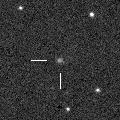
|
It is expected to brighten up to 13 mag and to be observable in good condition in 2015. Now it is 15.9 mag (Jan. 26, Taras Prystavski). In 2014, it will be observable at 15 mag in good condition from winter to summer.
Date(TT) R.A. (2000) Decl. Delta r Elong. m1 Best Time(A, h)
Feb. 15 14 0.81 -4 31.3 4.551 5.064 116 15.8 4:01 (190, 59)
Feb. 22 14 1.66 -4 17.2 4.414 5.021 122 15.7 3:55 (180, 59)
|
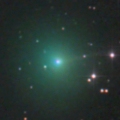
|
It brightened very rapidly in mid November, from 15 mag to 9 mag only within a week. Now it is fading very rapidly. It has already faded down to 16.0 mag (Jan. 30, Ken-ichi Kadota). It is observable in excellent condition in the Northern Hemisphere. It keeps locating extremely low in the Southern Hemisphere.
Date(TT) R.A. (2000) Decl. Delta r Elong. m1 Best Time(A, h)
Feb. 15 11 14.01 53 24.7 1.156 1.991 136 16.0 1:36 (180, 2)
Feb. 22 11 7.39 54 28.9 1.232 2.054 134 16.5 1:02 (180, 1)
|
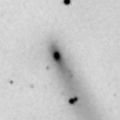
|
Now it is 15.7 mag (Jan. 27, Taras Prystavski), brighter than origianlly predicted. It will be observable at 14-16 mag for a long time from 2013 to 2014.
Date(TT) R.A. (2000) Decl. Delta r Elong. m1 Best Time(A, h)
Feb. 15 16 6.01 -22 40.5 4.009 3.996 82 16.0 4:01 (259, 56)
Feb. 22 16 10.58 -23 3.4 3.916 4.007 88 16.0 4:10 (252, 63)
|
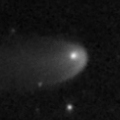
|
Now it is 15.1 mag (Jan. 20, Taras Prystavski). It will be fading after this, but it keeps brighter than 18 mag until 2015 spring.
Date(TT) R.A. (2000) Decl. Delta r Elong. m1 Best Time(A, h)
Feb. 15 3 4.59 -16 7.4 7.953 7.757 75 16.1 20:25 (103, 45)
Feb. 22 3 5.27 -15 15.1 8.083 7.790 69 16.2 20:15 (101, 41)
|
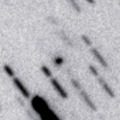
|
Now it is 16.6 mag (Jan. 11, Taras Prystavski). It brightens up to 15.5 mag from spring to summer, and will be observable in excellent condition in the Southern Hemisphere. It locates somewhat low in the Northern Hemispehre.
Date(TT) R.A. (2000) Decl. Delta r Elong. m1 Best Time(A, h)
Feb. 15 7 59.21 -25 29.3 1.615 2.397 132 16.3 22:17 (180, 81)
Feb. 22 7 55.03 -25 29.4 1.591 2.349 129 16.2 21:45 (180, 81)
|
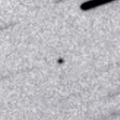
|
Now it is 17.2 mag (Jan. 12, P. C. Sherrod). It will approach to the earth down to 0.68 a.u., brighten up to 16 mag, and will be observable in excellent condition in spring.
Date(TT) R.A. (2000) Decl. Delta r Elong. m1 Best Time(A, h)
Feb. 15 12 25.68 28 14.3 0.836 1.722 141 16.6 2:48 (180, 27)
Feb. 22 12 16.12 26 29.1 0.781 1.703 148 16.4 2:11 (180, 29)
|
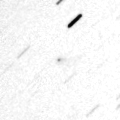
|
Now it is 16.5 mag (Feb. 19, Hidetaka Sato). It is observable at 16 mag in excellent condition at opposition in March. But it will fade out very rapidly after that. It will be fainter than 18 mag in May.
Date(TT) R.A. (2000) Decl. Delta r Elong. m1 Best Time(A, h)
Feb. 15 15 28.68 -17 56.3 1.536 1.851 91 16.6 4:01 (242, 60)
Feb. 22 15 13.69 -14 29.4 1.384 1.875 103 16.4 4:10 (216, 66)
|
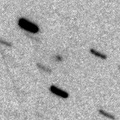
|
Now it is 17.0 mag (Jan. 24, A. Klotz, F. Kugel). It keeps close to the earth around 0.7 a.u. until spring. It will brighten up to 16.5 mag in February and March, and will be observable in excellent condition in the Northern Hemisphere. It locates very low in the Southern Hemisphere.
Date(TT) R.A. (2000) Decl. Delta r Elong. m1 Best Time(A, h)
Feb. 15 2 49.04 32 36.2 0.641 1.119 83 16.5 20:25 (140, 8)
Feb. 22 3 23.32 34 7.1 0.630 1.119 84 16.5 20:15 (144, 9)
|
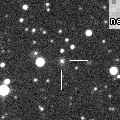
|
Now it is 15.8 mag (Jan. 18, Taras Prystavski). It keeps 16 mag for a long time until 2015 summer. It keeps observable in good condition in the Northern Hemisphere. It becomes observable only after 2015 in the Southern Hemisphere.
Date(TT) R.A. (2000) Decl. Delta r Elong. m1 Best Time(A, h)
Feb. 15 4 37.13 53 3.0 3.739 4.135 106 16.5 20:25 (167, 0)
Feb. 22 4 39.30 52 53.1 3.795 4.103 101 16.5 20:15 (165, -1)
|
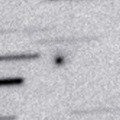
|
Now it is 16.6 mag (Jan. 7, Toshiyuki Takahashi). It is expected to brighten up to 6 mag in 2014 autumn. At this time, it keeps observable while brightening gradually until April when it becomes 16 mag.
Date(TT) R.A. (2000) Decl. Delta r Elong. m1 Best Time(A, h)
Feb. 15 5 17.70 21 1.5 3.027 3.547 114 16.9 20:25 (166, 33)
Feb. 22 5 9.92 20 39.4 3.071 3.465 105 16.8 20:15 (160, 32)
|
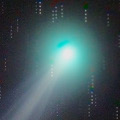
|
It approached to the sun down to 0.73 A.U. on 2013 Mar. 24, and brightened up to 4.7 mag (Mar. 11, Michael Mattiazzo). Now it is fading. It has already faded down to 16.5 mag (Jan. 1, G. Dangl). In the Northern Hemisphere, it keeps observable in good condition while fading gradually. In the Southern Hemisphere, it will never be observable again.
Date(TT) R.A. (2000) Decl. Delta r Elong. m1 Best Time(A, h)
Feb. 15 20 44.44 53 7.4 4.886 4.601 67 16.9 4:01 (226,-36)
Feb. 22 20 51.75 54 9.6 4.967 4.674 67 17.0 4:10 (223,-33)
|

|
It brightened up to 12-13 mag from autumn to winter in 2012. Now it is fading. But actually, it is 15.7 mag, brighter than this ephemeris (Jan. 26, Taras Prystavski). It will be observable until April in the Northern Hemisphere, or May in the Southern Hemisphere.
Date(TT) R.A. (2000) Decl. Delta r Elong. m1 Best Time(A, h)
Feb. 15 5 32.39 -1 55.1 4.618 5.096 113 16.9 20:25 (165, 56)
Feb. 22 5 32.82 -1 41.2 4.757 5.143 107 17.0 20:15 (158, 55)
|

|
First return of a new periodic comet which brightened up to 13 mag in outburst in 2008. It will be observable in good condition from spring to summer. But the brightness is uncertain. It was not detected, fainter than 21.0 mag on Jan. 6 (Jost Jahn).
Date(TT) R.A. (2000) Decl. Delta r Elong. m1 Best Time(A, h)
Feb. 15 12 49.11 10 28.3 1.827 2.636 136 17.4 3:11 (180, 45)
Feb. 22 12 48.54 11 12.5 1.756 2.618 143 17.1 2:43 (180, 44)
|
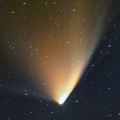
|
It passed the perihelion on 2013 Mar. 10, and brightened up to 0-1 mag. Now it is fading. It has already faded down to 15.8 mag (Jan. 15, Ken-ichi Kadota). It will keep 16-17 mag until spring. It is not observable in the Southern Hemisphere.
Date(TT) R.A. (2000) Decl. Delta r Elong. m1 Best Time(A, h)
Feb. 15 17 20.29 29 30.4 5.205 5.095 78 17.2 4:01 (226, 7)
Feb. 22 17 21.77 30 20.0 5.207 5.167 82 17.3 4:10 (220, 12)
|
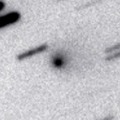
|
Now it is 16.9 mag (Jan. 29, Taras Prystavski). It tends to be brightest 4 months after the perihelion passage. However, it has already started fading. It will be fainter than 18 mag in March.
Date(TT) R.A. (2000) Decl. Delta r Elong. m1 Best Time(A, h)
Feb. 15 5 56.20 22 43.3 1.841 2.520 123 17.3 20:25 (177, 32)
Feb. 22 5 59.27 23 3.0 1.952 2.555 116 17.5 20:15 (173, 32)
|
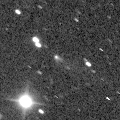
|
Now it is 17.4 mag (Jan. 4, Catalina Sky Survey). It keeps 17 mag for a long time from 2013 summer to early 2015.
Date(TT) R.A. (2000) Decl. Delta r Elong. m1 Best Time(A, h)
Feb. 15 2 19.87 14 43.9 3.201 3.037 71 17.3 20:25 (123, 17)
Feb. 22 2 28.07 15 15.3 3.289 3.034 66 17.3 20:15 (121, 15)
|
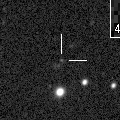
|
Now it is 17.6 mag (Jan. 19, Taras Prystavski). It will approach to the earth down to 0.06 a.u. from May to June, and it is expected to brighten up to 11 mag. In the Northern Hemisphere, it keeps observable in excellent condition until the highlight in late May while the comet will be brightening rapidly. In the Southern Hemisphere, it is not observable now. But it will be observable in mid May. Then it keeps observable in excellent condition at the highlight and after that while the comet will be fading.
Date(TT) R.A. (2000) Decl. Delta r Elong. m1 Best Time(A, h)
Feb. 15 8 17.07 69 57.8 0.669 1.450 120 17.4 22:34 (180,-15)
Feb. 22 7 52.11 71 40.5 0.644 1.388 114 17.3 21:42 (180,-17)
|

|
Now it is 17.6 mag (Jan. 27, K. Sarneczky). It keeps observable at 18 mag for a long time from 2013 to 2016. It keeps locating high in the Northern Hemisphere. It keeps locating very low in the Southern Hemipshere.
Date(TT) R.A. (2000) Decl. Delta r Elong. m1 Best Time(A, h)
Feb. 15 19 10.63 29 9.6 7.062 6.583 57 17.4 4:01 (242,-11)
Feb. 22 19 12.62 30 10.5 7.003 6.575 60 17.4 4:10 (237, -5)
|
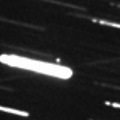
|
It keeps 17-18 mag for a long time from 2013 to 2014. It is observable in excellent condition in the Southern Hemisphere. It is not observable in the Northern Hemisphere.
Date(TT) R.A. (2000) Decl. Delta r Elong. m1 Best Time(A, h)
Feb. 15 14 30.82 -50 43.4 4.535 4.684 92 17.5 4:01 (333, 72)
Feb. 22 14 24.20 -52 19.3 4.431 4.682 98 17.4 4:10 (356, 73)
|
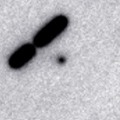
|
Now it is 17.4 mag (Jan. 15, A. Hidas). It is expected to brighten up to 14 mag from autumn to winter in 2015. The condition is excellent in the Southern Hemisphere, and it keeps observable for a long time after this while the comet will be brightening. In the Northern Hemisphere, it will be unobservable in late March.
Date(TT) R.A. (2000) Decl. Delta r Elong. m1 Best Time(A, h)
Feb. 15 5 18.65 -35 11.9 5.967 6.205 99 17.8 20:25 ( 86, 80)
Feb. 22 5 14.12 -34 2.2 5.998 6.166 95 17.8 20:15 ( 89, 76)
|
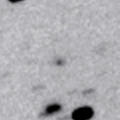
|
It keeps 18 mag for a very long time from 2013 to 2018. It locates high in the Southern Hemisphere. But it locates somewhat low in the Northern Hemisphere.
Date(TT) R.A. (2000) Decl. Delta r Elong. m1 Best Time(A, h)
Feb. 15 11 12.21 -19 30.4 8.565 9.365 142 17.9 1:34 (180, 75)
Feb. 22 11 10.43 -19 26.1 8.508 9.359 147 17.9 1:05 (180, 75)
|

|
Now it is 18.2 mag (Jan. 18, Taras Prystavski). It will brighten up to 14 mag around the perihelion passage in 2019. In 2013, it will be observable in good condition at 18 mag from summer to winter. It locates low in the Southern Hemisphere.
Date(TT) R.A. (2000) Decl. Delta r Elong. m1 Best Time(A, h)
Feb. 15 2 42.09 27 10.9 13.489 13.364 80 17.9 20:25 (135, 11)
Feb. 22 2 42.85 27 16.4 13.576 13.336 73 17.9 20:15 (132, 9)
|
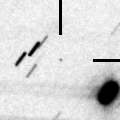
|
Now it is 18.3 mag (Jan. 25, iTelescope Observatory, Siding Spring). It keeps 18 mag from spring to summer. It is observable in good condition in the Southern Hemisphere. It is not observable in the Northern Hemisphere.
Date(TT) R.A. (2000) Decl. Delta r Elong. m1 Best Time(A, h)
Feb. 15 13 56.87 -38 3.7 0.664 1.314 103 18.0 4:01 (313, 86)
Feb. 22 14 18.75 -43 23.2 0.647 1.304 103 17.9 4:10 (358, 82)
|
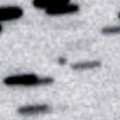
|
Now it is 17.4 mag (Jan. 31, iTelescope Observatory, Siding Spring). It keeps 17-18 mag for a long time from 2014 to 2016.
Date(TT) R.A. (2000) Decl. Delta r Elong. m1 Best Time(A, h)
Feb. 15 15 32.74 -13 5.6 5.762 5.879 91 18.0 4:01 (236, 56)
Feb. 22 15 29.97 -13 10.3 5.611 5.858 99 17.9 4:10 (222, 63)
|
|
![]()
 290P/2013 N1 ( Jager )
290P/2013 N1 ( Jager ) 17P/Holmes
17P/Holmes 154P/Brewington
154P/Brewington 4P/Faye
4P/Faye 134P/Kowal-Vavrova
134P/Kowal-Vavrova C/2006 S3 ( LONEOS )
C/2006 S3 ( LONEOS ) 29P/Schwassmann-Wachmann 1
29P/Schwassmann-Wachmann 1 C/2013 V1 ( Boattini )
C/2013 V1 ( Boattini ) C/2013 A1 ( Siding Spring )
C/2013 A1 ( Siding Spring ) C/2011 J2 ( LINEAR )
C/2011 J2 ( LINEAR ) C/2010 S1 ( LINEAR )
C/2010 S1 ( LINEAR ) 117P/Helin-Roman-Alu 1
117P/Helin-Roman-Alu 1 C/2012 V2 ( LINEAR )
C/2012 V2 ( LINEAR ) C/2014 C2 ( STEREO )
C/2014 C2 ( STEREO ) (596) Scheila
(596) Scheila 52P/Harrington-Abell
52P/Harrington-Abell C/2012 K6 ( McNaught )
C/2012 K6 ( McNaught ) C/2012 F3 ( PanSTARRS )
C/2012 F3 ( PanSTARRS ) C/2013 V3 ( Nevski )
C/2013 V3 ( Nevski ) P/2012 B1 ( PanSTARRS )
P/2012 B1 ( PanSTARRS ) C/2009 F4 ( McNaught )
C/2009 F4 ( McNaught ) C/2013 Y2 ( PanSTARRS )
C/2013 Y2 ( PanSTARRS ) 124P/Mrkos
124P/Mrkos C/2014 C3 ( NEOWISE )
C/2014 C3 ( NEOWISE ) P/2013 TL117 ( Lemmon )
P/2013 TL117 ( Lemmon ) C/2013 V2 ( Borisov )
C/2013 V2 ( Borisov ) C/2013 V5 ( Oukaimeden )
C/2013 V5 ( Oukaimeden ) C/2012 F6 ( Lemmon )
C/2012 F6 ( Lemmon ) C/2012 J1 ( Catalina )
C/2012 J1 ( Catalina ) P/2008 J2 ( Beshore )
P/2008 J2 ( Beshore ) C/2011 L4 ( PanSTARRS )
C/2011 L4 ( PanSTARRS ) 84P/Giclas
84P/Giclas 119P/Parker-Hartley
119P/Parker-Hartley 209P/LINEAR
209P/LINEAR C/2012 K8 ( Lemmon )
C/2012 K8 ( Lemmon ) C/2013 G7 ( McNaught )
C/2013 G7 ( McNaught ) C/2014 A4 ( SONEAR )
C/2014 A4 ( SONEAR ) C/2013 C2 ( Tenagra )
C/2013 C2 ( Tenagra ) C/2010 U3 ( Boattini )
C/2010 U3 ( Boattini ) 294P/2013 X2 ( LINEAR )
294P/2013 X2 ( LINEAR ) C/2013 G9 ( Tenagra )
C/2013 G9 ( Tenagra )![]()










































